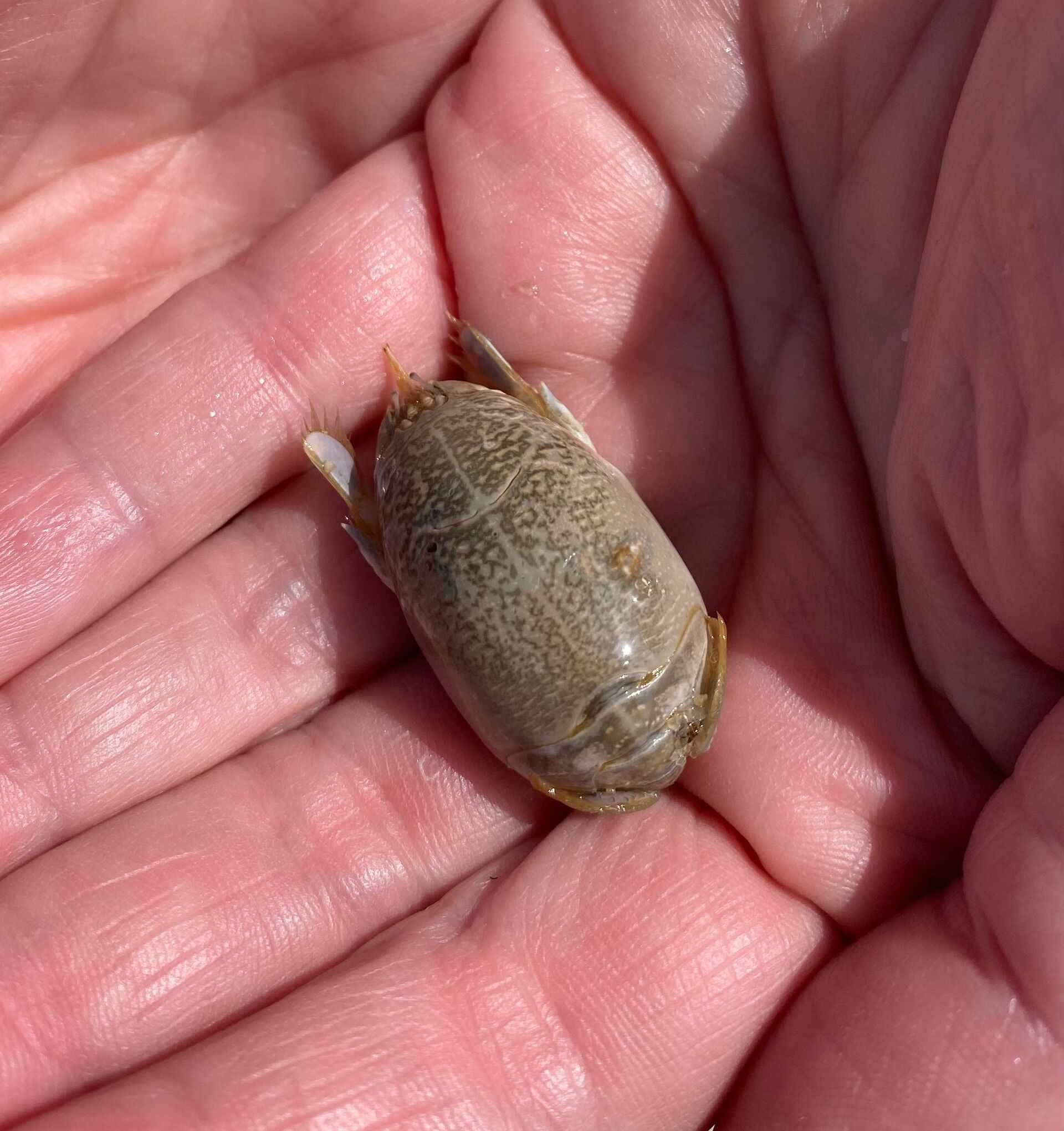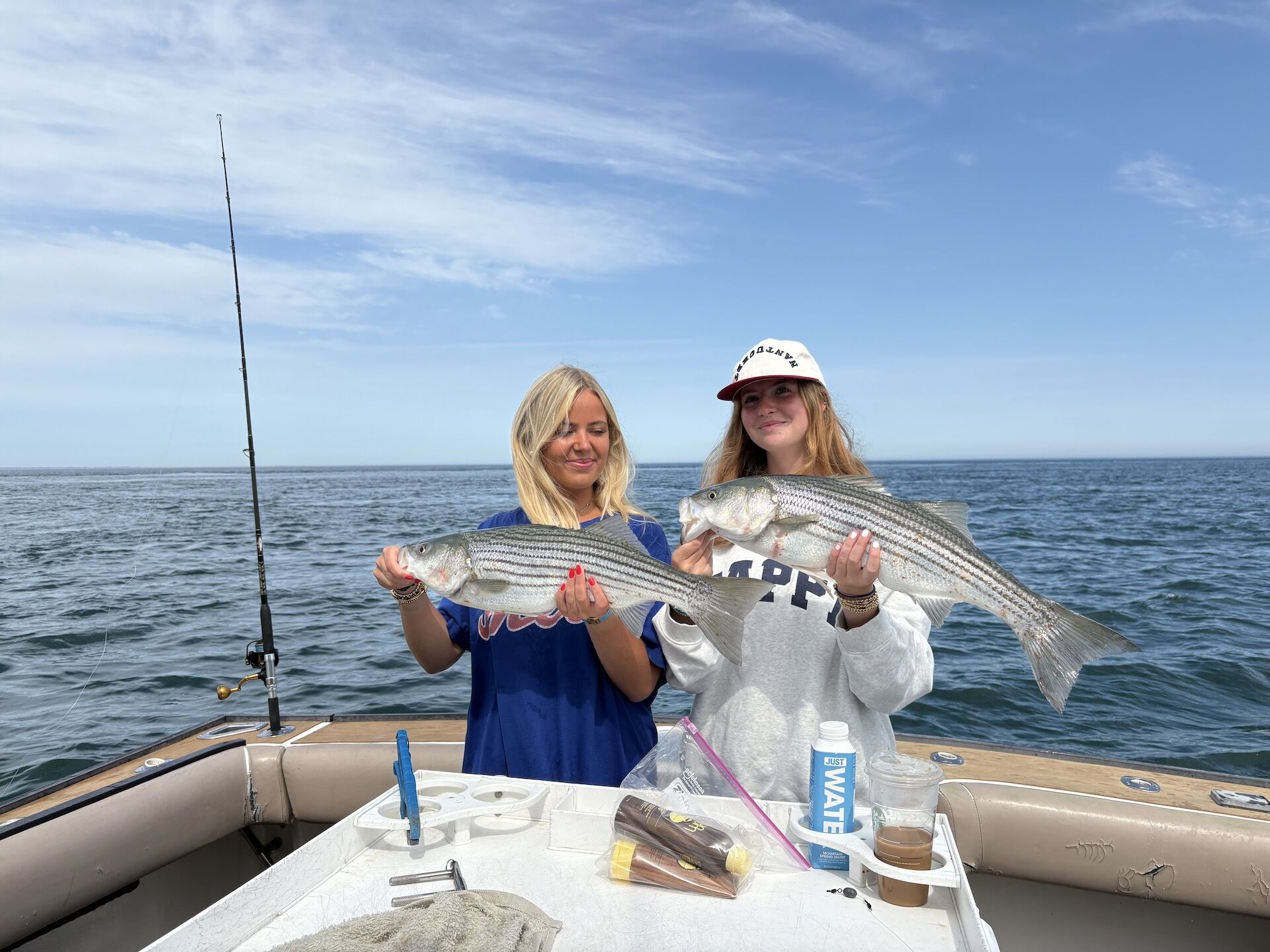Current Waters: Where Are The Mole Crabs?
Capt. Carl Bois •


I heard from a few people that the beach fishing on the south shore hasn’t been as good as it has been in recent years. Obviously, there are so many factors that determine where the fish are: water temperature, air temperature, temperature at depth, tides, the baitfish available, the predators around, or any combination of factors. Those who go regularly are the ones who know when something has changed or what might be a contributing factor.
One thing that came up when talking to a friend about the south shore beach fishing is mole crabs, or rather, the lack of mole crabs.
Mole crabs are the small (0.5-2 inches) seemingly sightless crabs of the shoreline that dig into the sand at the shore break. They move up and down with the tide in order to stay in wet sand but not get turned over by wave action. At places like Cisco or beaches west and east of there, you usually only have to dig a shallow trench with the heel of your foot parallel to the water to see a bunch of them. They try to burrow back down into the sand, but are easily scooped up and put into a bucket. They are fun with kids to dig for since they don’t have any claws or spikey parts, just wiggly legs.
Mole crabs are an important food source for our stripers at certain times of the year. They are certainly an important part of the puzzle, at least.
So what’s the deal with them missing from parts of the south shore? Well, it could be a random year. Or just an anecdotal observation. Mole crabs move around a lot. They live in the intertidal after all. It’s a dynamic environment. If there is an actual decline, that would be unfortunate on multiple levels. Mole crabs are considered an indicator species for coastal health. Declines in their populations could signal underlying issues impacting the overall health of sandy beach ecosystems.

With a bit of digging (no pun intended), I found some info that mole crabs could be in decline in other parts of the country. Some studies suggest that mole crab populations have declined in specific locations, especially those with high human usage.
One possible threat is habitat alteration. Activities such as dredging and beach nourishment can have a direct impact on crab populations. And while the beaches on the south shore of Nantucket haven’t been manually altered, a significant amount of sand has shifted through the system as some of the beaches have naturally built up since last year.
Another threat to mole crabs that has been studied is microplastics. Since mole crabs eat small plankton and other invertebrates in the water, they can ingest microplastics, which can lead to higher mortality rates. High human usage of beaches, including those allowing off-road vehicles, may further contribute to declines. Most of the information about mole crab threats and declines comes from the West Coast, where populations have crashed on some beaches. Hopefully, we can learn from those areas, and this local decline is just a blip. Mole crabs are pretty adaptable, and their toughness may help them be more resilient.
Fishing Report

July 10 (Thursday) was the full moon (the Buck Moon). The full moon is doing its job and changing things up. We’re seeing the water cool down. Fishing is great. The stripers are fired up again. So get out there on the water when you can.
The bait is also starting to make a shift. We’re seeing less squid in exchange for some smaller bait, including micro baits and small sand eels. With that said, some tactics and presentation will need to adjust to match the hatch. You can’t just count on top water to get the job done anymore.
Bluefish have been found on the west end, around the south shore, and at Sankaty. They’re generally in warmer waters, not pushing into the cooler water where we’ve been fishing for stripers. A few have shown up with the stripers, but not many.
We’ve also been picking away at some seabass and fluke. If you’re at the right place at the right time, you can pick away at them, but if you want them, you have to put your time in – cover some water.
Hey, where did those bonito go that were here earlier in the summer?
Well, it’s finally time to go tuna fishing. The full moon is doing its job for those as well. Book your tuna charters and let’s get at it. Wink, wink.
Until next tide...